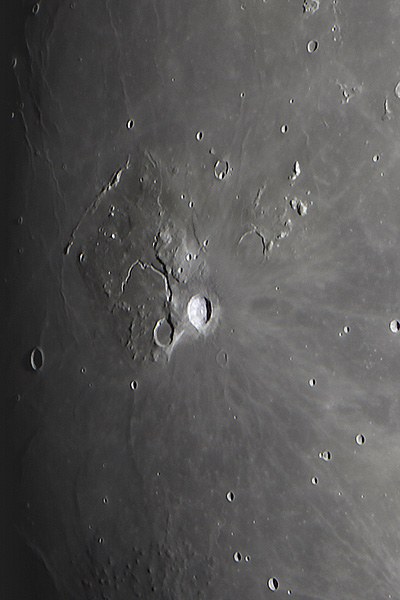Is the Moon unchanging?
Lunar observers claim to have witnessed remarkable optical phenomena since before the invention of the telescope. Later, following the development of powerful telescopes and an increase in the number of lunar observers, these sightings, collectively referred to as Transient Lunar Phenomena (TLP), became more frequent. These sightings were generally reported by isolated observers, and even in the recent past, were almost never accompanied by photographic evidence; for this reason, the majority of specialists in the field considered these sightings to be optical illusions or stray light entering the telescopes rather than occurrences on the lunar surface. Even after all the Moon landings and many unmanned observation missions, this mystery has yet to be resolved.
A historically significant TLP sighting occurred on 29 October 1963, when the experts' attention was turned to the Moon in preparation for the manned lunar missions. On that evening, at the Lowell Observatory in Flagstaff, Arizona, the experienced cartographers James A. Greenacre and Edward Barr, independently recorded very bright colour phenomena in the region around the prominent crater Aristarchus. But with the phenomena lasting only 20 minutes, there was not enough time to obtain photographic evidence. Their exemplary reputation as impeccable cartographers– having detailed knowledge of the Aristarchus Plateau – gave their report a considerable amount of credibility.

Composite panorama of the Moon created from four images acquired on 15 April 2011 at 22:29 CET. High-Resolution download. Credit: Rolf Hempel.
Today in Europe, the British Astronomical Association (BAA) coordinates the scrutiny of historical TLPs reported by amateur astronomers. One method involves observing the Moon at times when the illumination geometry matches precisely the one prevailing at the time of a reported TLP. For this, not only must the phase of the Moon match perfectly, but the 'lunar libration', which causes the Moon to appear to 'wobble' during the course of its orbit around Earth, must also precisely coincide. The argument in favour of this method is that, if it is not possible to reproduce the TLP under identical viewing conditions, then it follows that the observations cannot have been optical illusions caused by unusual lighting conditions.

The conditions on 15 April 2011 between 21:00 and 23:00 CET matched exactly those of the observation made back in 1963. Accordingly, the BAA called for observations of the Aristarchus Plateau with the best available high-resolution colour photography. That night, the skies above Germany were clear and the air was exceptionally calm, so I participated in this campaign. Between 22:14 and 22:44, I used my telescope, an apochromatic refractor with a lens diameter of 130 millimetres, and a Canon 5D MK II camera, to capture a total of 420 images. At a focal length of 3240 millimetres, the Moon was too large to fit into a single frame, so I photographed the four quadrants of the Moon separately and then combined the images on my computer to form a composite 'panorama'. I superimposed the 105 images of each of quadrant to improve their sharpness and reduce noise.
Aristarchus is the remarkably bright crater near the terminator, or line separating the lit and dark side of the Moon, visible towards the left-hand side of the overview image. In the enlarged view, the slightly brownish Aristarchus Plateau is surrounded by the vast mare lava plains of the lunar mare known as Oceanus Procellarum or Ocean of Storms. Above Aristarchus and Herodotus, the crater on the left is the 'Cobra Head' at the start of Schröter's Valley, which is believed to be an ancient lava flow.
Back in 1963, Greenacre and Barr pinned down the location of the optical effects they witnessed as being near the Cobra Head and on the southwestern slopes of the Aristarchus crater. In spite of thorough observation with my telescope and posterior examination of my photographic record, I was unable to confirm this sighting. Everything looked just as I've been seeing it for many years.
As much as I would have liked to see an unusual optical phenomenon with my own eyes, my failure to do so lends further support to the authenticity of the phenomenon observed back in 1963. Did Greenacre and Barr really see luminous clouds of gas above the lunar surface?
As suggested in the comments, I have added a detailed enlarged view showing the lunar North Pole.

Lower image: Detailed enlarged view of the Aristarchus Plateau on the Moon. Credit: Rolf Hempel. The last image shows a detailed enlarged view showing the lunar North Pole. Credit: Rolf Hempel/Wilfried Tost.
Tags:
